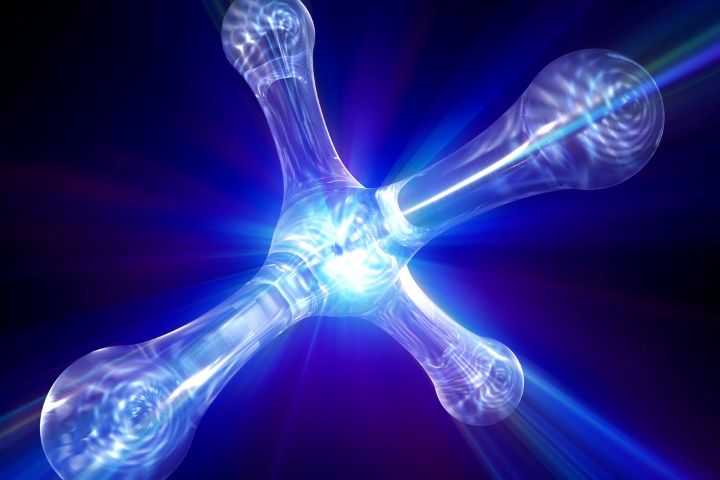Subatomic particles

What are subatomic particles
All those structures smaller than the atom are considered subatomic particles. They are responsible for giving properties to matter and their discovery has allowed us to understand many of the phenomena in our universe.
The physics that governs the small world of subatomic particles is quantum physics, more specifically quantum field theory. This area of physics theoretically describes the different characteristics of these particles and has represented a great advance in modern physics.
Throughout history, humans have always tried to understand what the matter around us is made of. For many centuries it was believed that the atom was the indivisible part of matter.
Today we know that this is not the case. There is a world full of particles smaller than the atom and many of them do not exist naturally on our planet since they are highly unstable.
For this reason we have built large particle accelerators where we generate very unstable subparticles that we could not detect naturally. In this way we are gradually discovering more and more atomic subparticles, such as, for example, the famous Higgs boson.
Elementary particles and compound particles
Subatomic particles are classified according to the standard model into several groups. The first level of classification is bosons and fermions.
Fermions are considered those structures that form matter and bosons are considered those that mediate the interaction between the different fermions.
Next we will make an introduction to the most important subatomic, composite and elemental particles in modern physics.
Fermions
Fermions are a type of particle whose function is to constitute matter. This type of structure is described by an antisymmetric quantum wave function that follows the Pauli exclusion principle.
This principle says that two fermions cannot be in the same quantum state. Furthermore, these types of particles have half-integer spins. We can classify fermions into quarks and leptons.
Quarks
Quarks are elementary particles that come together through strong nuclear interaction to form hadrons, within which are protons or neutrons.
We know 6 types of quarks: up quark, down quark, charm quark, strange quark, top quark and bottom quark.
Quantum chromodynamics is the quantum field theory that describes the behavior of the interaction of quarks in the nucleus and the boson that mediates this interaction: gluons.
Leptons
Leptons are a type of fermion that follow the Fermi-Dirac statistics, that is, they have spin ½ and comply with the Pauli exclusion principle.
In total there are 6 different leptons according to their properties. These are the electron, the muon, the tauon and their corresponding neutrinos, the electron neutrino, the muon neutrino and the tauon neutrino.
Hadrons
Hadrons are particles composed of quarks which are held together through the exchange of bosons called gluons, mediators of the strong nuclear interaction.
We can classify hadrons into baryons and mesons. Baryons are hadrons that are made up of 3 quarks with different color charges. The best-known examples of baryons are the composite particles that make up the atomic nucleus, neutrons and protons.
Mesons are hadrons formed by the union of a quark and an antiquark.
Bosons
Bosons are the elementary particles that generate the fundamental forces of the universe.
According to quantum field theory, the interactions that exist are a consequence of the exchange of bosons between fermions. For example, the electric force experienced between two charges is due to the exchange of photons.
Quarks are held together in the atomic nucleus thanks to the strong nuclear force, that is, the exchange of bosons called gluons.
Photons
Photons are fundamental particles that make up light. Photons travel through a vacuum at a speed of 300,000 km/s and have no mass. They are the carriers of all types of radiation such as infrared light, ultraviolet light, visible light, X-rays or gamma rays.
Gluons
Gluons are the bosons that generate the strong nuclear interaction. They have a characteristic quantum property called color charge. The color charge has the function of holding the quarks together in the atomic nucleus.
Gluons, more specifically, the field associated with them (gluon field) is responsible for giving mass to baryons such as protons or neutrons.
W and Z bosons
These types of bosons are responsible for the weak nuclear force. This force mediates the radioactive disintegration of unstable atomic nuclei.
The electroweak theory describes the weak nuclear interaction as a Yang-Mills field associated with a SU(2) gauge symmetry. The W and Z bosons are particles generated through the excitation of this gauge quantum field.
Gravitons
The graviton is a hypothetical particle that would be the cause of the gravitational interaction. Its existence has not yet been confirmed experimentally, only from theories such as string theory in an attempt to quantize gravity.
According to theoretical models, the graviton must have spin 2, without charge and with practically zero mass.
String theory describes the graviton as a closed string or brane. This would explain the weakness of this type of force and could also exert the gravitational force in other dimensions beyond the 3 dimensions of our universe.
virtual particles
Virtual particles are a type of subatomic particles that live for a very short time and their properties are difficult to obtain.
According to modern theories, the fundamental forces are a consequence of the exchange of bosons. These bosons would be virtual particles with very short life times.
For example, photons are real particles when they transmit electromagnetic radiation such as light. However, when they act as mediators of the electromagnetic force they act as virtual particles.

